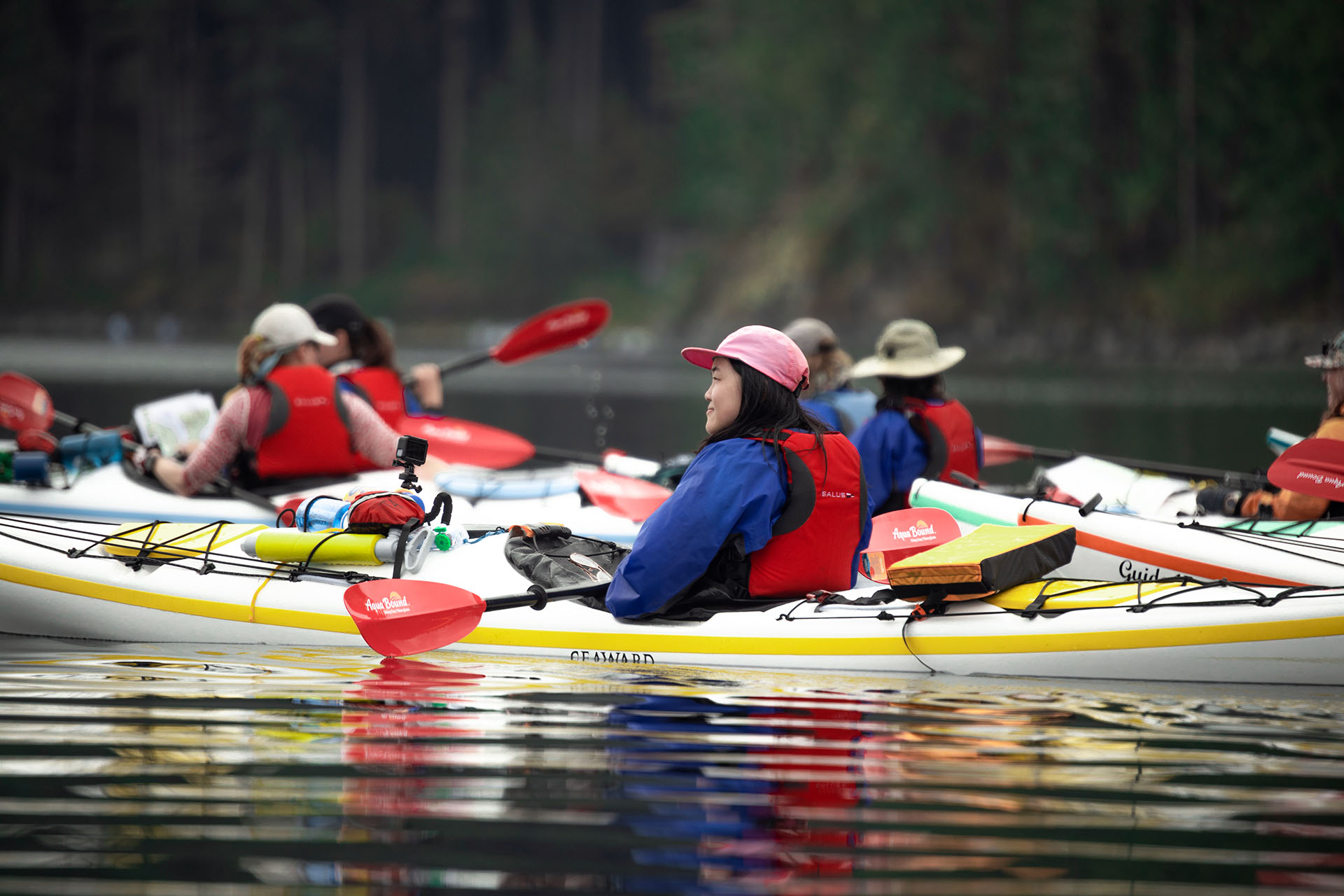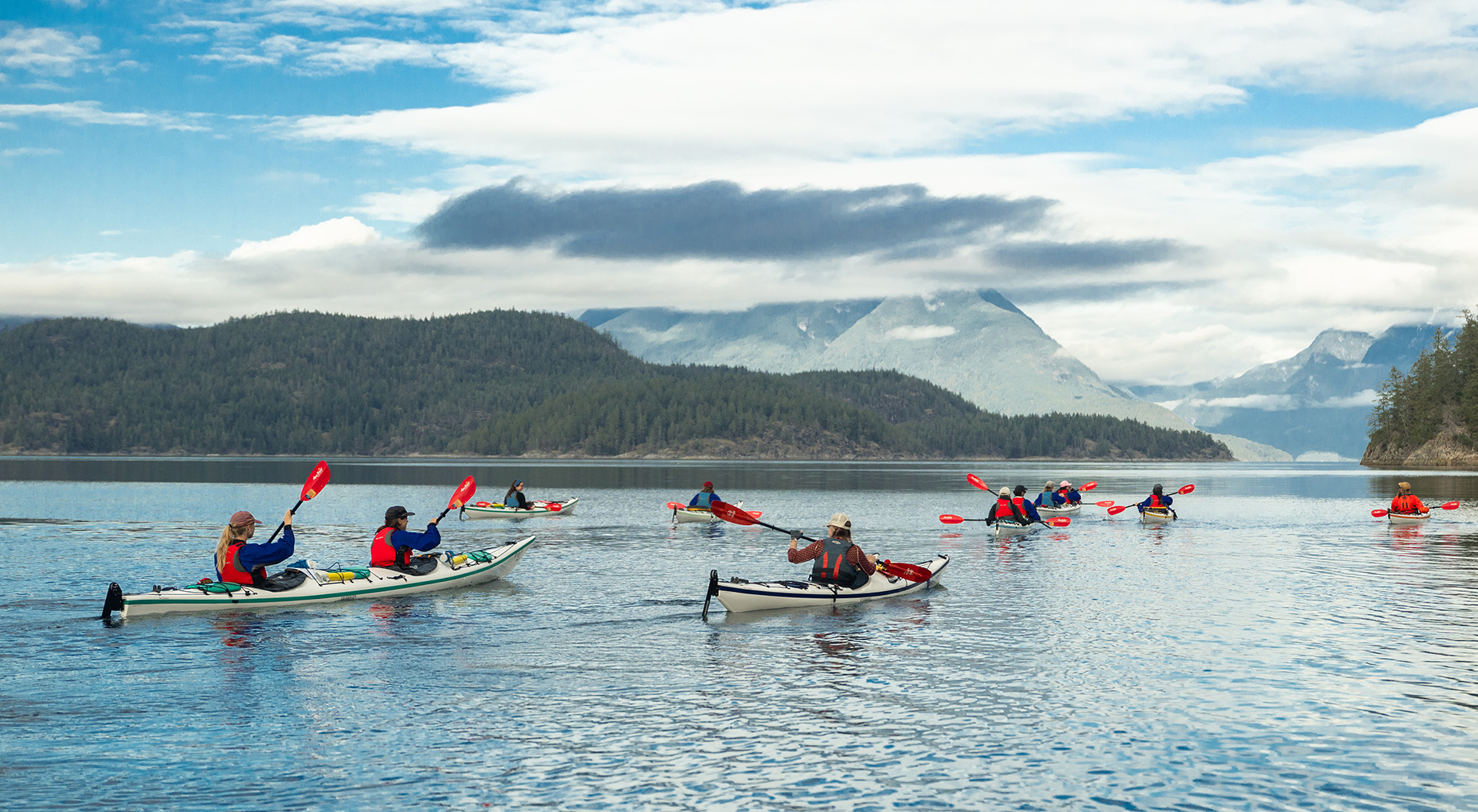Heuristic Traps
Learning Objective
To introduce the concept of heuristic traps and explore how they impact judgment and decision-making in risk environments.
What is a Heuristic?
A heuristic is a mental shortcut that that allows individuals to make quick decisions, judgments, or solve problems with minimal mental effort. Although heuristics can reduce cognitive load and expedite decision making, they may come at a cost when they lead individuals to overlook critical information or act on unconscious biases.
Research suggests that in almost every area of our lives, heuristics are the decision strategy that is most frequently used. When we are making decisions in the outdoors in risk environments it’s particularly important that we understand how they work and how to avoid falling into Heuristic Traps.

“What gets us into trouble is not what we don’t know. It’s what we know for sure that just ain’t so.”
-Mark Twain
An Example
When faced with a problem or decision, our unconscious mind looks for familiar features in a situation and then responds. For example, imagine that you’re driving in traffic, and the car ahead of you suddenly slows. Without thinking about it, you’d probably moved your foot to the brake pedal and applied the brakes. Little to no logical or critical thinking is engaged in taking the action of applying the brakes, we are simply playing out an instinctive response based on previous experience and practice.
The element of speed (going too fast) and the other car appearing in front of us triggers a response (applying the brakes) that is almost automatic. You don’t evaluate all the relevant information, weigh the alternatives, and decide on the best course of action. This type of “fast” (System 1) thinking can be invaluable for obvious reasons – we don’t always have time to engage our conscious thinking skills in response to a fast moving scenario.
We use heuristics because they excel in situations where analytic methods fail (complex, unstructured environments). In situations requiring complex analysis, a reliance on heuristics can lead to poor decisions. The automatic, instinctive responses generated by heuristics may overlook critical information or fail to consider nuances, resulting in bigger problems.
Heuristic Traps
We can get away with using heuristics, sometimes for years, before we get feedback that our heuristics have failed. This is because of Non-Event Feedback, where a poor decision still results in a positive outcome, allowing us to think that the original decision was good. We continue to repeat the same type of decision in similar situations because it has always resulted in success. An example of this is that we have walked over an old bridge on a familiar section of trail many times over the season – each time we pass we reach the other side of the bridge with no incident. What we have not noticed is that one of the bridge supports has been decaying and is close to giving out. The next time we reach the bridge we start to cross, but this time the support fails and we fall into the cold river. This is an example of the Heuristic Trap of “Familiarity” – a common one in the outdoors. When we finally get feedback that our decisions were poor, it can come from a serious, or possibly catastrophic incident!
FACETS
FACETS, also known as the “Human Factors” is a tool designed to remember the six common heuristic traps in outdoor adventure settings, and was developed in the study of accidents in the ski/avalanche industry. The table outlines the names and trigger features (event or situation which triggers the mind to use the heuristic) of each one.
Name |
Trigger Feature |
Heuristic |
|
F |
Familiarity | Familiar setting or situation | “I’ve done it before so it’s what I should do now.” Our brain creates shortcuts and uses past actions to guide decisions |
A |
Acceptance | Actions/expectations by a person or group that I want to impress | “Someone else who I want to be liked or respected by accept me if I do this”. This is a form of peer pressure – and can be an especially active heuristic for outdoor leaders looking to be accepted by a co-lead, mentor, clients/participants, or supervisor. |
C |
Consistency/Commitment
|
Some circumstances have changed or are unforeseen | “I should remain consistent with my prior opinions, actions, or decision.” This is like a shortcut for the brain – completely re-evaluating a plan can take a lot of brain energy. |
E |
Expert Halo | Having a perceived expert/leader in the group | “If an expert believes it then it’s what I should believe.” We will tend not to question the ‘expert’ or leader regardless of their experience. |
T |
Tracks/Scarcity | Valuing resources or opportunities in proportion to their rarity | “If something is scarce then I should desire it.” Finding fresh tracks by pushing into more hazardous terrain is an example of this from the ski world. |
S |
Social Facilitation | Belief that a behaviour or action is correct to the extent that other people are engaged in it | A group who is confident in their skills will tend to make more risky decisions. Other group members may follow simply because it is easier than leading or speaking up. |
Paddling on an Ocean
Familiarity
The familiarity heuristic is especially powerful because it is simple and it frees us from having to go through time-consuming decision making processes again and again, only to arrive at what is usually the same conclusion. People unconsciously use this heuristic dozens of times each day.

“I have paddled this crossing in 3 ft. waves before, so this time should be fine too.”
Situation: You’re accustomed to paddling in this area on your own or with friends, and decide to apply your skills to leading a group without adequately considering the differences in currents, waves, and potential hazards.
Consider: Are there other factors in play that were not present the last time you paddled a crossing of this size (beyond wave height)? I.e. size of group & group experience, travel speed, time of day, energy levels, presence of currents, steady versus gusty winds, amount of vessel traffic, amount of gear in the boats?
Acceptance
The acceptance heuristic is the tendency to engage in activities that we think will get us noticed or accepted by people we like or respect, or by people who we want to like or respect us. We are socialized to this heuristic from a very young age, and because of that, we are vulnerable to it.

“My group really wants to get to a certain beach they had heard about…”
Situation: Your co-leaders have decided on a route to get to a campsite they really like and are pushing the group to get there before dusk. While you have some reservations about it you decide that it is too much of a hassle to speak up, so you go along with the decision.
Consider: Does the fact that others want/expect to get to a site have any bearing on the risk of going?
Consistency/Commitment
Rather than sift through all the relevant information with each new development, we merely make a decision that is consistent with an earlier one.

“We are supposed to make it to campsite X tonight, so we had better make it there, because that’s the plan.”
Situation: You’ve been planning a paddling trip for weeks and have invested time and resources, so you decide to proceed despite a sudden deterioration in weather conditions.
Consider: Does the fact that you planned out the route and all the hazards ahead of time have any bearing on the current conditions?
Expert Halo
Sometimes leadership is based on knowledge and experience in [the] terrain; sometimes it is based on simply being older, a better paddler or hiker, or more assertive than other group members.

“Susan is the best at understanding weather, and she says it should be fine today, so I should think that too.”
Situation: An experienced paddler in your group suggests a certain route, and you follow it blindly without researching the potential challenges or considering alternative options.
Consider: Does that fact that “Susan” says so have any bearing on the objective risk (maybe Susan is stressed or tired or has fallen into her own heuristic traps)?
Scarcity
This heuristic involves individuals placing disproportionate value on opportunities or resources that are perceived as limited or scarce. When something is perceived as rare or in short supply, people may assign higher value to it, and this can lead to increased competition or urgency in obtaining it.

“The campsite we are headed to is often busy, we need to push on and get there early!”
Situation: You’re excited about getting to a location and the weather is favorable, so you disregard safety precautions and warnings because you fear missing out on this rare chance.
Consider: Does the fact that the campsite might be full have any bearing on the risk during travel to get there?
Social Facilitation
In general, we rely on the social facilitation heuristic most when we are uncertain and when others similar to ourselves are engaged in an activity.

“I heard that the other group is running that rapid, so we should be safe to do it too.”
Situation: You’re paddling with a group of skilled individuals, and you attempt a challenging route beyond your actual capabilities because you’re influenced by the presence of experienced paddlers.
Consider: Does the fact that a near-by group did the same rapid have any bearing on your level risk in this (that group may have made a poor decision, had different experience, or different equipment)?

Remember, these heuristic traps can lead to poor decision-making and risky situations!
Here are some key strategies to avoid falling into heuristic traps:
- Cognitive Bias Awareness: Be conscious of cognitive biases and heuristic traps that may influence decision-making. Regular self-reflection can increase awareness.
- Seek Diverse Perspectives: Actively seek input and perspectives from a diverse range of individuals. This helps in avoiding the narrow focus that heuristics may create.
- Stay Informed: Stay updated on changing conditions, risks, and relevant information. Timely and accurate information is crucial for making well-informed decisions.
- Prioritize Safety: Place a higher priority on safety over the comfort of familiarity or the desire for consistency. Safety considerations should guide decision-making.
- Critical Evaluation: Critically evaluate information from both experts and non-experts. Consider multiple sources to ensure a more comprehensive understanding of the situation.
- Balanced Assessment: Make decisions based on a balanced assessment of the available information. Avoid over-reliance on heuristics and consider the nuances of each situation.
- Assertive Communication: Utilize assertive communication when expressing concerns about decisions being made. Open and clear communication contributes to a more collaborative and informed decision-making process.
By incorporating these strategies, individuals can create a more resilient decision-making framework that minimizes the impact of heuristic traps. This approach fosters a proactive and safety-oriented mindset, particularly in environments where risks are inherent.

“The hallmark of an expert is not that she has reached a level of subconscious heuristic processing. It is that she has developed the intentional practice of self-reflection that allows her to understand why she subconsciously chose to follow or ignore the heuristic at hand.”
– Gates Richards and Tod Schimelpfenig, National Outdoor Leadership School
When do heuristics work?
Familiarity – If you have paddled a certain crossing many times in many differing conditions and different groups, and all variables fit into previously paddled conditions.
Acceptance – If someone flags a concern, use this heuristic to explore that concern. Role modelling and normalizing this behaviour can make it acceptable and safe to discuss concerns.
Consistency/Commitment – If you had researched or experienced the route and hazards that you are currently seeing.
Expert Halo – If you are a complete novice, then you have to trust those knowledgeable (clients white water rafting, or new staff in training). However, applying conservative decision making strategies and using the “two to go, one to say no” rule.
Scarcity – If there is no where to pull off, you may have to keep going. Or if there is no water source at a site, you may have to continue to another location. The risk of not following the heuristic may be greater than the risk exposure involved in traveling, but the risk still must be considered.
Social Facilitation – This can work as inspiration to explore certain areas, or try new things when you trust and understand other people’s experience and skills.
Case Study : A Camping Trip
Read the story below, and see if you can identify the four heuristic traps that the group falls into during their trip.
“The sun rose over the peaceful lake as we set out. Our two leaders, Sarah and Mark, were geared up and ready to get going. Overseeing eight campers, both leaders were experienced and had managed groups like ours before, though I’m willing to guess now that most groups didn’t have quite so many misadventures!
We began our trip by paddling 8 kilometers across the lake to a the start of a river, which we entered and began to navigate with no issues. Both Mark and Sarah observed that the water level was lower than normal for the spring.
We quickly reached a fork in the river. One route was a well-traveled path some of us had used in past trips. The other was unfamiliar to everyone but Mark, who said it led to a remote area of the wilderness which would challenge us a bit more than the usual route. Mark had also taken the familiar route multiple times before and explained that the lower-than-normal water levels might make the route more difficult than usual.
Despite Mark’s recommendation to take the less familiar route, the whole group, including myself, felt drawn to the familiar one. We believed it would be safer and more comfortable.
It was not long before we found ourselves navigating through thick reeds and seemingly endless twists and turns! It was well past lunch when we arrived at our destination and began to look for a suitable campsite . There were a lot of sore shoulders and back, and more than a few sunburned necks.
As we searched for a campsite, we came across another group of campers who had already set up not far from our landing site. Their camp seemed perfect to me, and the campers all had the latest outdoor gear. I couldn’t help but feel a little insecure about our own modest setup.
We approached the experienced campers who welcomed us and offered advice on campsite selection, but we soon realized that like us, they were learning as they went along. Mark and Sarah offered them some guidance and complimented them on their campsite, before moving us on to find one of our own. We found a good site and began to set up camp and get ready for the evening.
The next day we began a hike, guided by Sarah. Along the trail, we encountered a solo hiker named Jessie who joined our group for a bit. They told us tales of their past adventures and said they were a wilderness survival expert.
Eager to learn from Jessie, we followed their lead. However, as time passed and our surroundings grew increasingly unfamiliar, it became evident that perhaps Jessie wasn’t as much of an expert as we thought they were. Sarah was able to use her compass to get us back on track and headed back toward our site.
After a late lunch, we began the final few kilometers back to our site. As we hiked, Sarah mentioned casually that there was a waterfall nearby and we could head out the next morning if we got up early to go see it. All the hikers decided they’d rather see it that day and not have to get up early. Sarah advised that it wasn’t a good idea, but that if everyone wanted to go, she could safely navigate us there and back. We decided to go, and while the waterfall was beautiful, nobody really felt it was worth stumbling through the bush at night to see.
Fortunately, the rest of the trip was fun (and relatively uneventful!). We stayed for three nights, and everyone had a great time. The return trip was much smoother than the initial launch, and I felt much more knowledgeable (and sunburned) by the end of the trip, though I wouldn’t tell anyone that I was a ‘wilderness survival expert!’”
How do we avoid heuristic traps?
Research suggests that simply knowing the conditions under which a heuristic trap can occur is not enough. Likewise, building arguments about why you are not falling into a heuristic trap during any particular decision is more likely to be an exercise in rationalization than an actual deterrent.
The best way to avoid heuristic traps is to test the trigger features (condition) of these heuristics against the actual conditions.
For example:
-
Does my familiarity with this area have any bearing on its level of risk? (Familiarity)
-
Does my head guide’s “expertise” in paddling ocean swell have any bearing on my or my group members’ ability or comfort in paddling ocean swell? (Expert Halo)
-
Does the fact that we planned on hiking today have any bearing on the actual hazards of group energy, weather, visibility, etc.? (Commitment)
-
Does hearing another group doing a crossing on the radio 5 miles away have any bearing on the crossing we are about to do? (Social Facilitation)
If the test shows no meaningful relationship, then the leader must re-evaluate and use other, more appropriate heuristics or choose a particularly conservative course of action.
If the above test fails, what other reliable heuristics are available to us?
- Policies or protocols
- Actual weather or terrain conditions
- Scope of Practice
- Group and leader ability and capacity
The above tools are powerful for testing to see if a heuristic trap is impacting your decision making, but it takes practice! Make a habit of considering the ‘what ifs’ and potential consequences of a decision while using the above tests. Try to catch yourself or your group in real-time in a heuristic trap and discuss when heuristics are used and if they match the current conditions.

References
Ackerman, M. (2021, March 21). The Human Factor: Heuristic Traps In The Backcountry. Weston Backcountry. Retrieved August 28, 2023, from https://westonbackcountry.com/en-ca/blogs/news/the-human-factor-heuristic-traps-in-the-backcountry
American Avalanche Institute. (2020, January 21). ALPTRUTH AND FACETS: TWO ACRONYMS THAT CAN SAVE YOUR LIFE. American Avalanche Institute. https://www.americanavalancheinstitute.com/alptruth-and-facets-two-acronyms-that-can-save-your-life/
McCammon, I. (2002, September 29). Evidence of heuristic traps in recreational avalanche accidents [International Snow Science Workshop 2002].
McCammon, I. (2004). Heuristic Traps in Recreational Avalanche Accidents: Evidence and Implications. Avalanche News, 68, 1-10. http://www.sunrockice.com/docs/Heuristic%20traps%20IM%202004.pdf
Richards, G., & Schimelpfenig, T. (2010). Comments on the “Levels of Expertise Matrix”. Wilderness Risk Management Conference. https://www.nols.edu/media/filer_public/68/7d/687d3a9e-ac00-43f2-8b1f-14370ee9de99/judgement_and_decision_making_-_comments_on_the_levels_of_expertise_model_schimelpfenig-richards.pdf
Scope of Practice refers to the specific activities, procedures, responsibilities, and limitations that are permitted for a particular profession or occupation as determined by a higher body.


